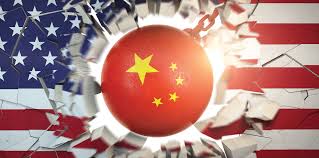
China has moved decisively to enlarge its diplomatic footprint around the world as Washington’s engagement recedes. From Africa to Latin America, and across Asia and the Pacific, Beijing is deploying a mix of high‑level visits, infrastructure financing, special envoys and cultural outreach to supplant traditional U.S. influence—and to position itself as the go‑to partner for development, security and trade.
Deepening Ties in the Global South
In Africa, China’s long‑standing Forum on China–Africa Cooperation (FOCAC) has been elevated into a year‑round mechanism, with ministerial gatherings and working‑group meetings held in multiple capitals rather than concentrated in a single summit. Beijing’s diplomats have announced new lending lines—often at concessional rates—for railways in East Africa and hydro projects in Central Africa, stepping in where U.S. aid programs have been scaled back. Chinese special envoys rotate through the continent every month, locking in agreements on everything from medical‑team dispatches to digital‑health networks. On the ground, Confucius Institutes and scholarship programs are cultivating the next generation of African elites who view China as a partner rather than a patron.
Meanwhile, in South Asia, China has accelerated its “People‑to‑People” exchanges. Student‑exchange quotas with Pakistan and Sri Lanka have doubled, while visa‑waiver agreements took effect for citizens of Bangladesh and Nepal earlier this year. Beijing has opened new cultural centers in Colombo and Kathmandu, promoting Mandarin classes alongside business seminars that showcase Belt and Road projects—high‑speed rail, port expansions and energy corridors—designed to lock in regional connectivity under Chinese leadership. Where the U.S. once relied on soft‑power grants and small‑scale infrastructure programs, China now offers multi‑billion‑dollar packages that marry finance with construction expertise.
Strategic Partnerships in Asia and the Pacific
Across Southeast Asia, President Xi Jinping’s recent tour to Vietnam, Cambodia and Malaysia yielded a cascade of accords: new joint‑railway blueprints, 50 technical cooperation pacts on renewable energy, and pilot exchange programs for civil‑service training. These initiatives are framed not as debt traps but as mutual‑benefit partnerships, with cash grants tied to local‑content requirements and training for regional engineers. In the Pacific Islands, China’s Pacific Islands Forum envoy has quietly signed memoranda of understanding on fisheries management with Kiribati, Vanuatu and Tonga, while port‑development deals in Papua New Guinea and Fiji promise to strengthen maritime ties—an explicit counterweight to U.S. and Australian security pacts in the region.
Beijing has also courted Central Asian republics through the Shanghai Cooperation Organisation, positioning itself as a mediator on regional security and counter‑terrorism. In recent months, senior Chinese diplomats have convened trilateral talks on water‑resource management in Kyrgyzstan and Uzbekistan, and offered development grants for digital‑governance platforms in Kazakhstan. With U.S. interest diverted by other theaters, China portrays itself as the reliable guarantor of stability along the old Silk Road.
Bolstering Presence in Latin America and Europe
In Latin America, China’s inaugural China‑Latin America and Caribbean Forum last summer transitioned from an occasional meeting into an annual revolving conference, rotating through Mexico City, Santiago and Brasília. During the most recent session, Xi announced a \$10 billion credit line for infrastructure—power‑grid modernization in Brazil, port expansions in Peru and electric‑bus fleets in Chile—all underwritten by the China Development Bank and executed by state‑owned enterprises. Beyond dollars and steel, Chinese diplomats have promoted visa‑free travel for citizens from Argentina, Colombia, and Uruguay, fostering tourism and business travel in direct competition with traditional U.S. influence in the region.
In Europe, China has deepened its outreach through the “16+1” mechanism with Central and Eastern European states, funding highway upgrades in Poland and university research partnerships in Hungary. Although Brussels remains wary of debt diplomacy, Chinese cultural institutes now operate in more than a dozen EU capitals, sponsoring language courses and business forums that showcase China’s tech champions. High‑level visits—by both foreign‑ministry vice‑ministers and provincial governors—underscore a decentralized approach: Beijing dispatches not just top diplomats, but also mayors and railway executives to close deals city‑to‑city, bypassing some of the political scrutiny that national‑level engagements attract.
New Tools of Influence
Central to China’s strategy are special envoys—senior diplomats assigned exclusively to regions such as the Pacific Islands, Latin America or the Middle East. These envoys hold monthly consultation rounds, deliver aid packages, and fast‑track licensing for Chinese firms. At the same time, China’s policy banks and development funds are offering preferential loans tied to expert‑training programs, ensuring that recipients develop the capacity to design and maintain projects independently—but remain aligned with Chinese standards and equipment.
Media outreach also plays a critical role. Chinese state broadcasters have ramped up their English‑ and Spanish‑language feeds, while digital‑media partnerships with local outlets in Africa and Latin America push pro‑Beijing narratives on development successes. Social‑media campaigns highlight “China’s contributions to COVID recovery” and “Green Belt and Road” solar‑power projects, carefully framing Beijing as the champion of sustainable growth.
Finally, multilateral engagement has not been overlooked. China has boosted its contributions to U.N. peacekeeping and is pressing for seats on key U.N. committees. In negotiations over climate finance, Beijing has positioned its own South‑South Climate Cooperation Fund as an alternative to Western‑managed green‑fund mechanisms. And at forums like the G20 and APEC, Chinese delegates now outnumber U.S. counterparts in working groups on infrastructure, digitalization and health, signaling a shift in agenda‑setting power.
As the United States retrenches from long‑standing aid programs and diplomatic missions, China’s multi‑pronged approach—combining money, ministers, media and multilateral muscle—has enabled it to step into the breach. In doing so, Beijing is not merely filling holes left by America; it is reshaping global partnerships around its own priorities, potentially redrawing the diplomatic map for decades to come.
(Source:www.japantimes.co.jp)
Deepening Ties in the Global South
In Africa, China’s long‑standing Forum on China–Africa Cooperation (FOCAC) has been elevated into a year‑round mechanism, with ministerial gatherings and working‑group meetings held in multiple capitals rather than concentrated in a single summit. Beijing’s diplomats have announced new lending lines—often at concessional rates—for railways in East Africa and hydro projects in Central Africa, stepping in where U.S. aid programs have been scaled back. Chinese special envoys rotate through the continent every month, locking in agreements on everything from medical‑team dispatches to digital‑health networks. On the ground, Confucius Institutes and scholarship programs are cultivating the next generation of African elites who view China as a partner rather than a patron.
Meanwhile, in South Asia, China has accelerated its “People‑to‑People” exchanges. Student‑exchange quotas with Pakistan and Sri Lanka have doubled, while visa‑waiver agreements took effect for citizens of Bangladesh and Nepal earlier this year. Beijing has opened new cultural centers in Colombo and Kathmandu, promoting Mandarin classes alongside business seminars that showcase Belt and Road projects—high‑speed rail, port expansions and energy corridors—designed to lock in regional connectivity under Chinese leadership. Where the U.S. once relied on soft‑power grants and small‑scale infrastructure programs, China now offers multi‑billion‑dollar packages that marry finance with construction expertise.
Strategic Partnerships in Asia and the Pacific
Across Southeast Asia, President Xi Jinping’s recent tour to Vietnam, Cambodia and Malaysia yielded a cascade of accords: new joint‑railway blueprints, 50 technical cooperation pacts on renewable energy, and pilot exchange programs for civil‑service training. These initiatives are framed not as debt traps but as mutual‑benefit partnerships, with cash grants tied to local‑content requirements and training for regional engineers. In the Pacific Islands, China’s Pacific Islands Forum envoy has quietly signed memoranda of understanding on fisheries management with Kiribati, Vanuatu and Tonga, while port‑development deals in Papua New Guinea and Fiji promise to strengthen maritime ties—an explicit counterweight to U.S. and Australian security pacts in the region.
Beijing has also courted Central Asian republics through the Shanghai Cooperation Organisation, positioning itself as a mediator on regional security and counter‑terrorism. In recent months, senior Chinese diplomats have convened trilateral talks on water‑resource management in Kyrgyzstan and Uzbekistan, and offered development grants for digital‑governance platforms in Kazakhstan. With U.S. interest diverted by other theaters, China portrays itself as the reliable guarantor of stability along the old Silk Road.
Bolstering Presence in Latin America and Europe
In Latin America, China’s inaugural China‑Latin America and Caribbean Forum last summer transitioned from an occasional meeting into an annual revolving conference, rotating through Mexico City, Santiago and Brasília. During the most recent session, Xi announced a \$10 billion credit line for infrastructure—power‑grid modernization in Brazil, port expansions in Peru and electric‑bus fleets in Chile—all underwritten by the China Development Bank and executed by state‑owned enterprises. Beyond dollars and steel, Chinese diplomats have promoted visa‑free travel for citizens from Argentina, Colombia, and Uruguay, fostering tourism and business travel in direct competition with traditional U.S. influence in the region.
In Europe, China has deepened its outreach through the “16+1” mechanism with Central and Eastern European states, funding highway upgrades in Poland and university research partnerships in Hungary. Although Brussels remains wary of debt diplomacy, Chinese cultural institutes now operate in more than a dozen EU capitals, sponsoring language courses and business forums that showcase China’s tech champions. High‑level visits—by both foreign‑ministry vice‑ministers and provincial governors—underscore a decentralized approach: Beijing dispatches not just top diplomats, but also mayors and railway executives to close deals city‑to‑city, bypassing some of the political scrutiny that national‑level engagements attract.
New Tools of Influence
Central to China’s strategy are special envoys—senior diplomats assigned exclusively to regions such as the Pacific Islands, Latin America or the Middle East. These envoys hold monthly consultation rounds, deliver aid packages, and fast‑track licensing for Chinese firms. At the same time, China’s policy banks and development funds are offering preferential loans tied to expert‑training programs, ensuring that recipients develop the capacity to design and maintain projects independently—but remain aligned with Chinese standards and equipment.
Media outreach also plays a critical role. Chinese state broadcasters have ramped up their English‑ and Spanish‑language feeds, while digital‑media partnerships with local outlets in Africa and Latin America push pro‑Beijing narratives on development successes. Social‑media campaigns highlight “China’s contributions to COVID recovery” and “Green Belt and Road” solar‑power projects, carefully framing Beijing as the champion of sustainable growth.
Finally, multilateral engagement has not been overlooked. China has boosted its contributions to U.N. peacekeeping and is pressing for seats on key U.N. committees. In negotiations over climate finance, Beijing has positioned its own South‑South Climate Cooperation Fund as an alternative to Western‑managed green‑fund mechanisms. And at forums like the G20 and APEC, Chinese delegates now outnumber U.S. counterparts in working groups on infrastructure, digitalization and health, signaling a shift in agenda‑setting power.
As the United States retrenches from long‑standing aid programs and diplomatic missions, China’s multi‑pronged approach—combining money, ministers, media and multilateral muscle—has enabled it to step into the breach. In doing so, Beijing is not merely filling holes left by America; it is reshaping global partnerships around its own priorities, potentially redrawing the diplomatic map for decades to come.
(Source:www.japantimes.co.jp)














